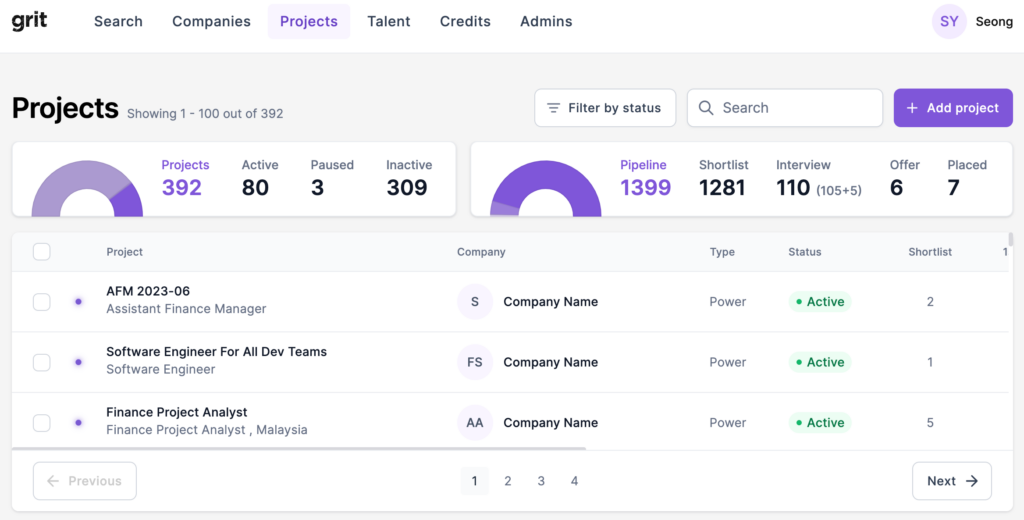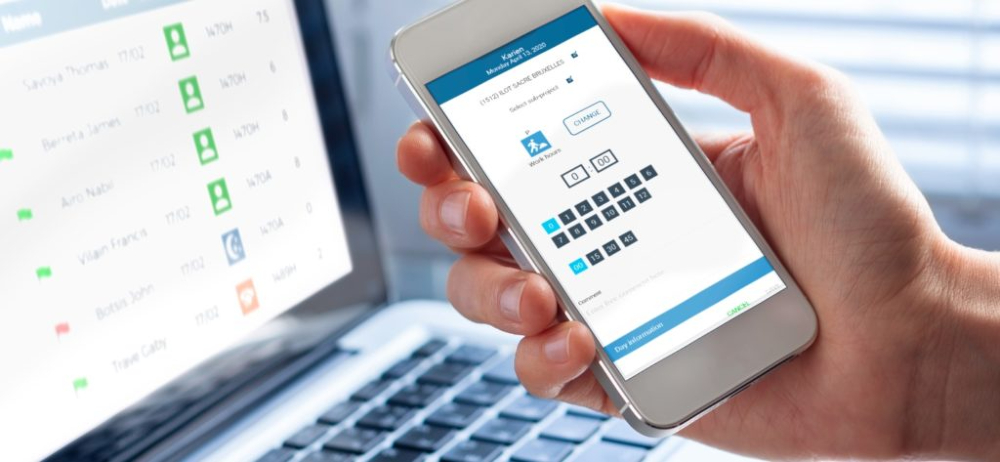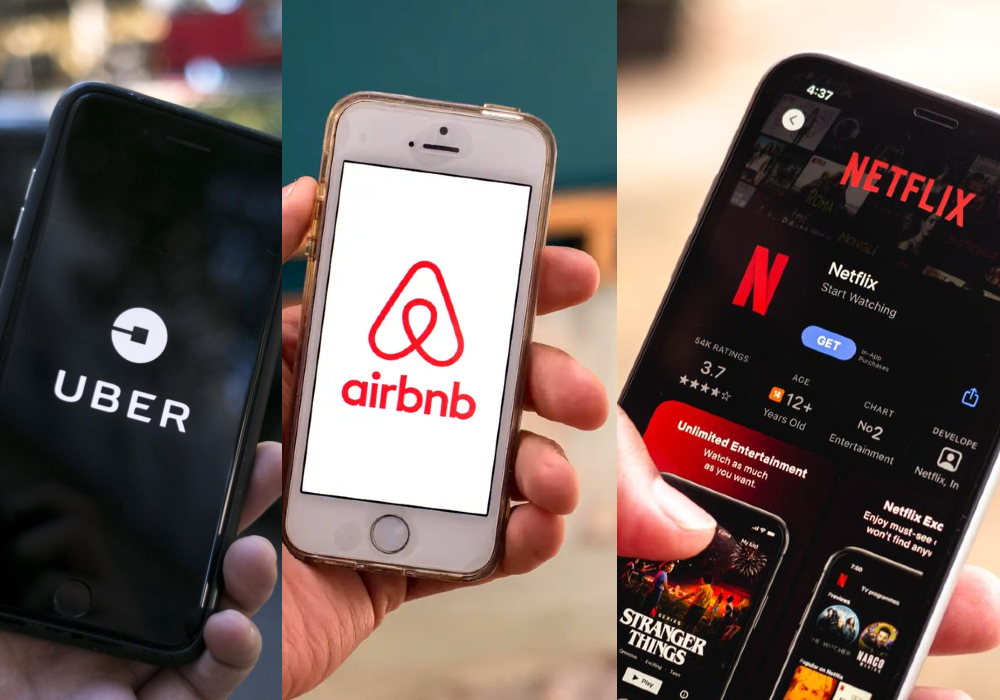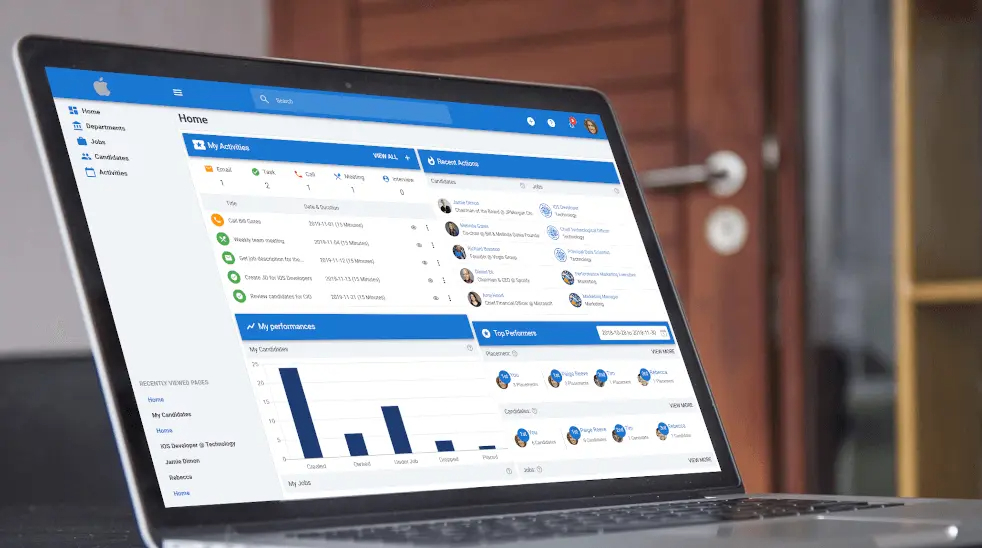
The recruitment process poses various challenges for recruiters and hiring managers. These challenges include the time-consuming nature of sourcing and screening candidates, as well as the high competition to attract and secure top talent. Lengthy time-to-hire can also result in candidates losing interest or accepting offers from other companies, impacting the candidate experience and employer brand. Unconscious bias and the need for diversity, along with the existence of skill gaps and the costs associated with recruitment, further compound the challenges faced by organisations.
To address these challenges, innovative solutions are necessary. Utilising technologies like artificial intelligence (AI) and automation can streamline processes, improve efficiency, and enhance the candidate experience.
Artificial intelligence (AI) has emerged as a game-changer in the recruitment industry, revolutionising the way organisations attract, assess, and hire talent. With its advanced capabilities, AI offers a range of benefits that enhance efficiency, accuracy, and candidate experience throughout the recruitment process.
AI-powered algorithms can automate the initial stages of candidate sourcing and screening by analysing resumes, job descriptions, and relevant data to identify the most qualified candidates. This saves recruiters from the daunting task of manually reviewing countless applications.
With the ability to process vast amounts of data at a rapid pace, AI algorithms can assess candidate qualifications, skills, and experience more accurately. By leveraging natural language processing (NLP) and machine learning, AI systems can understand and interpret resumes and other documents with remarkable precision. This not only minimises human error but also enhances the overall quality and efficiency of candidate evaluation.
AI-powered chatbots and virtual assistants can engage with candidates in real-time, providing instant responses to inquiries, scheduling interviews, and delivering personalised updates. This interactive and responsive communication creates a positive impression of the organisation and ensures that candidates feel valued and engaged throughout the hiring process.
Artificial intelligence (AI) has emerged as a game-changer, revolutionising the way organisations approach talent acquisition. With its advanced capabilities in data analysis, natural language processing, and machine learning, AI has paved the way for innovative applications in various stages of the recruitment process. From candidate sourcing and resume screening to skill assessment and candidate engagement, AI-powered tools and algorithms have proven to be invaluable in streamlining workflows, improving efficiency, and enhancing the overall recruitment experience.
AI-powered tools can efficiently search and analyse vast amounts of data from various online platforms, social media profiles, and professional networks to identify potential candidates who match specific criteria.
AI-driven systems can automate the screening of resumes by using natural language processing (NLP) and machine learning algorithms. These tools can extract relevant information, assess qualifications, and match candidates to job requirements, speeding up the initial evaluation process and ensuring that recruiters focus on the most promising candidates.
AI technologies can objectively assess candidate skills and qualifications by analysing multiple data points, including resumes, application responses, and online profiles. Advanced algorithms can evaluate technical skills, cognitive abilities, and behavioural traits, providing recruiters with valuable insights into candidate suitability and potential.
AI-powered chatbots and virtual assistants can engage with candidates in real-time, providing instant responses to queries, scheduling interviews, and delivering personalised updates. These interactive tools enhance candidate engagement, improve response times, and create a positive impression of the organisation.
AI helps automating data collection and analysis, allowing recruiters to efficiently process large volumes of information and identify potential red flags or discrepancies. It helps mitigate bias by focusing on objective criteria and provides a more comprehensive assessment of a candidate's background.
AI can help to analyse reference responses and extract key insights, quickly identify patterns, sentiment, and relevant information from reference check conversations or written feedback. AI can also help automate the collection of reference data, ensuring a more efficient and standardised approach to the process.
AI can also play a significant role in the onboarding process by offering personalised training materials, addressing employee inquiries, and ensuring a seamless transition for new hires. With AI-powered tools, organisations can provide ongoing support to employees, offering personalised development suggestions and cultivating a positive employee experience.
A recent research found that 79% of employers use AI or automation for recruitment and hiring. Despite the optimistic outlook on AI's impact, concerns and challenges surrounding its implementation persist. It is crucial to acknowledge and address these challenges to ensure the responsible and effective use of AI in recruitment.
To achieve this, it is crucial to provide clean and unbiased data for AI-powered tools. Organisations should carefully select and feed in data that is free from unconscious biases to prevent the algorithms from learning and perpetuating biassed decisions. Continuous monitoring and auditing of the AI algorithms can help identify and rectify any potential biases that may arise.
AI algorithms may face difficulties in understanding candidates, especially when analysing resumes or engaging with them through chatbots. To overcome this challenge, providing candidates with options to select or interact with buttons can help the AI chatbot better understand their preferences and needs. Additionally, candidates with specific requests should be connected with human recruiters to ensure effective communication and a positive candidate experience.
AI should be viewed as a tool to aid recruiters, not replace them. Human recruiters possess gut instincts and subjective judgement that AI lacks. It is important to maintain a balance where AI is used as a supportive tool alongside human decision-making to leverage the benefits of both approaches in the recruitment process.
AI algorithms require a significant amount of good quality data to operate effectively. Collecting and preparing the data can be time-consuming, and organisations must stay updated with changing trends and language in the job market. Regularly updating the AI technology and providing the algorithm with relevant and up-to-date data is essential for achieving accurate and reliable results.
Like any tool, AI software has its limitations. When choosing an AI recruiting solution, organisations should carefully evaluate its capabilities and consider whether it aligns with their specific needs and improves the overall candidate experience. Being aware of these limitations and seeking solutions that offer comprehensive features can help optimise the recruiting process.
There are countless AI recruitment tools in the market, each enabling employers to easily navigate candidate sourcing, screening, assessment, interviews, and more. There’s one particular tool that stands out — GRIT. GRIT helps employers to solve the biggest puzzle in the recruitment world — candidate sourcing & screening.
GRIT works at the top of the funnel, which is also the most challenging part of the recruitment process, where GRIT automatically source, curate and qualify the candidates to be interview ready. Moreover, our in-house talent advocates are also involved to remove bias and take the hassle out of hiring by managing end-to-end recruitment life cycle.

Instead of spending months and thousands of dollars to hire, GRIT has consistently been able to help employers to hire in just 3 weeks, at only US$999 per role. On top of that, there’s a risk free plan where you only need to pay when you decide to interview the candidates! Sign up now and experience the power of AI hiring.
AI in recruitment holds transformative potential and plays a crucial role in shaping the future of talent acquisition. By adopting AI technologies, organisations can overcome traditional challenges, streamline processes, and enhance the efficiency of their hiring practices. From automating candidate sourcing and screening to improving candidate engagement and making data-driven decisions, AI offers numerous benefits that revolutionise recruitment.
Embracing AI enables companies to stay competitive and optimise their strategies, ultimately leading to the identification of the most suitable candidates and the formation of high-performing teams. It's time to embrace AI and leverage its capabilities to enhance recruitment practices and drive success in the ever-evolving talent landscape.

Reference checks are a critical component of the hiring process for many organisations. It aims to gather information about a candidate from people who have worked with or know them well. Reference checks are used to verify the accuracy of a candidate's resume and to gain insight into their work habits, strengths, weaknesses, and overall character. Reference checks questions are carefully crafted to elicit detailed and informative responses that can help employers decide whether a candidate is the right fit for the job.
The goal of the reference check is to confirm that the candidate has been honest in their job application and to see if the applying candidate is indeed suitable for the job and the company.
One of the best ways to avoid bad hires is by conducting reference checks on job applicants. According to Forbes, it is estimated one bad hire can cost a company at least 30% of the employee’s annual salary. Hence why it is imperative to thoroughly review candidates' applications — not everything on paper translates well into practice or is factually correct.
Besides doing a background check, asking the right reference check questions will help to verify claims and statements made by the candidates in their resumes — thus helping you to make an informed decision.
In addition to verifying on paper skills and experience, employers also will be able to see whether the candidates’ behaviours and attitudes are the right fit for their company's work culture and environment. If candidates' behaviours and attitudes don’t fit a company's work culture and environment there will be a risk of internal conflict and friction, which will affect a company’s productivity, performance and efficiency.
The right questions will provide you with answers and help you identify and evaluate candidates better, to see if they fit into your company’s culture and the job position. Below we have listed several questions that you can use as a reference and use when interviewing candidates.
The standard procedure for every job interview is that before employers extend a job offer, they will usually conduct a reference check for their top candidates to see if the candidates are suitable for the position and company.
Below we have listed a few ways for you to utilise the reference check questions we shared in this article in the most professional and effective way:
Reference checks are an essential component of the job hiring process that can help employers make informed decisions about potential candidates. By seeking feedback from previous supervisors or colleagues, employers can gain valuable insights into a candidate's work habits, strengths, weaknesses, and overall character. Preparing a set of well-crafted reference check interview questions and selecting the right person to interview can help employers make the most of the process.
Paying attention to the reference's tone and manner of speaking, in addition to their responses, can help employers to gain a comprehensive understanding of the candidate's suitability for the role and their potential within the company. To put it simply, conducting reference checks can lead to better hiring decisions, increased productivity, and a more positive work environment.

Finding the right candidates for open job positions can be a daunting task for employers. Job boards have become a popular solution to connect with potential candidates. However, not all job boards are created equal. Some job boards are more effective than others in delivering results for employers. In this article, we will explore the top job boards that work for employers and help them find the best candidates.
GRIT is a venture-backed recruitment company that provides a unique recruitment service for employers to hire qualified talent quickly and reduce the cost to hire significantly. What sets GRIT apart from other job boards is the AI-powered Talent Platform that automatically qualifies job-ready candidates in just three days for any roles specified by employers at a fixed price of US$999. Additionally, the GRIT Talent Platform integrates with some of the most common ATS, facilitates multi-user collaboration, and provides smart scheduling options for employers to arrange interviews instantly.
In other words, an employer can enjoy impressive recruitment support at a significantly low cost (US$999) to achieve a more effective and efficient hiring process. Talk to GRIT to learn more!
SEEK Asia has a wide network of regional job boards across South East Asia and Hong Kong — JobStreet MY, JobStreet PH, JobStreet SG, JobStreet ID, JobsDB HK, and JobsDB TH; reaching 36 million active talent profiles in these regions, with more than 240,000 jobs at any given time. On top of that, SEEK Asia has also been reinvesting in its products and offerings to help both employers and job seekers in matching efficiency and effectiveness.
One of the biggest investments from SEEK Asia is on their data capability and platform to help employers increase the chances of job ads reached and viewed by the matching talent by up to 20%. Simply put, employers can be sure that they will be able to recruit talent that meet their company needs and requirements easily by utilising SEEK Asia's robust data capability and platform.
SEEK Asia offers multiple job posting packages that are tailored to meet different needs of employers. Instead of paying per job posting, employers purchase a set amount of credits that can be used to select the appropriate job posting package for their roles. This approach is particularly useful for employers to manage their budget effectively based on the urgency of their hiring needs.
| Branded | Premium | Premium Ad Plus |
| Employers get to enjoy all the benefits of Lite Ads. | Employers get to enjoy all the benefits of Branded Ads, plus. | Employers get to enjoy all the benefits of Premium Ads. |
| 2x more space for employers to showcase their top 3 value propositions. | Will be able to enjoy the ability to prioritise candidates on both mobile and desktop devices. | Employers will have access to personalised job ad writing and posting. |
| Personalised image banners. | Faster access to potential candidates. | The ability to screen and list potential candidates. |
| Wider reach. | - | Time efficiency by only interacting and engaging with potential candidates only. |
In addition to the job postings that come along in each of the ad packages, other features that further complement the job posting include:
SEEK Asia’s Talent Search has a vast database and employers can leverage this to actively search for the right candidates instead of waiting for candidates to apply for jobs. Employers will also be able to customise their search to find candidates with specific skill sets.
Using SEEK Asia’s SiVA Recruitment Centre tool, employers will be able to take advantage of its advanced filtering capabilities; they can widen or narrow their candidates to fit hiring preferences. In addition, SiVA Recruitment also allows employers to collaborate with stakeholders throughout the selection process so that they can make quicker decisions.
SEEK Asia’s Employer Branding Services help employers to stand out from their competitors by effectively expanding their company’s reach through mass media and targeted media. In addition, employers will be able to track their branding campaign; find how the job market perceives them via reviews and ratings.
Well-positioned and known within the Asia region as a comprehensive job search site. SEEK Asia provides a huge talent pool for employers to choose from — low skills, mid-level and high-end white collar. Allow employers to attract both local and global talent to work for their company. Extensive talent search features that allow employers to find the right talent.
LinkedIn is a powerful professional networking platform that provides unparalleled opportunities for connecting with like-minded businesses and expanding employers’ professional talent pool. LinkedIn boasts an impressive 900 million users across 200 countries & territories in 2023, with 13 million users in Southeast Asia and 2.77 million users in Hong Kong.
Unlike other job boards, employers will have the opportunity to connect directly with potential candidates by contacting them directly via the Linkedin direct message. This allows employers to gauge and know their potential candidates at a more personal level, not just from their resume.
In addition, employers can create a hassle-free application process using the Linkedin Easy Apply feature. And employers can share their company's latest achievements and milestones to attract and engage candidates on the Linkedin social platform.
LinkedIn Recruiter is a premium tool offered by LinkedIn that provides advanced search and messaging capabilities for recruiters to find and connect with potential candidates on the platform. It allows recruiters to search for candidates based on various criteria such as job title, location, industry, and experience level, and provides access to in-depth candidate profiles, which include details such as work history, education, and skills.
LinkedIn Recruiter Lite, on the other hand, is a more basic version of LinkedIn Recruiter that offers a simplified search and messaging interface. It is designed for smaller companies or individual recruiters who do not need the full range of features provided by LinkedIn Recruiter. LinkedIn Recruiter Lite still provides access to candidate profiles and messaging capabilities, but with some limitations compared to the full version of LinkedIn Recruiter.
LinkedIn Jobs allows employers to post open roles and easily target, prioritise, and manage qualified candidates. LinkedIn’s algorithm helps the jobs to reach the right audiences and if that’s not enough, they also allow employers to add a budget to promote the urgent roles to increase visibility and expand reach.
LinkedIn can provide real-time insights to help employers make the right hiring decisions. In addition to that, it can also assist employers to find quality candidates effectively and address skill gap issues via benchmarking. This hiring tool also allows employers to create future talent pipelines using detailed snapshots and talent recommendations.
LinkedIn Talent Hub is a recruiting and applicant tracking system designed for companies to streamline their hiring process. It allows recruiters and hiring managers to post job openings, manage candidate applications, and collaborate with team members all in one platform. Talent Hub also offers features such as candidate sourcing, job posting distribution, and customizable hiring workflows to help companies find and hire top talent more efficiently. Additionally, the platform integrates with other LinkedIn products like LinkedIn Recruiter and LinkedIn Learning to provide recruiters with more resources and insights to make informed hiring decisions.
LinkedIn stands out from other job search sites for employers due to its focus on professional networking and comprehensive profiles. With a vast and diverse talent pool, employers can connect with potential candidates based on their skills and experience, and build meaningful relationships. LinkedIn profiles provide detailed information, allowing employers to gain a comprehensive understanding of candidates' professional backgrounds, skills, endorsements, and recommendations.
Indeed is one of the job board pioneers that was founded in 2004. It boasts a massive 665 million visits globally monthly with 42.1 million visits from SEA and 1.6 million from HK, it also claims to have 200 million resumes worldwide — meaning employers will have access to a huge pool of candidates. For employers looking to fill non-executive roles quickly, Indeed may be an appealing option because though Indeed caters to all industries and experience levels, Indeed is mostly frequented by entry-level and lower-level professionals candidates rather than executive level candidates.
Job Postings
It comes with free job postings but with limited reach. However, employers have the option to sponsor their job ads with a dedicated budget to get more reach. It starts at $5 a day.
Indeed Resumes
Indeed Resume Search is a tool for employers to find and connect with potential job candidates on the Indeed platform. Employers can search for resumes using various criteria, view detailed candidate profiles, and save and download resumes. The tool also offers the option to contact candidates directly through the platform, and set up alerts for new resumes that match their search criteria.
Indeed Hiring Platform
The Indeed Hiring Platform is a comprehensive recruiting solution designed to help employers streamline their recruitment process. It offers features such as job posting, candidate sourcing, applicant tracking, and analytics to provide employers with a complete recruitment solution. The platform also integrates with other tools, such as Indeed Assessments and Indeed Instant Match, to help employers make data-driven hiring decisions and connect with qualified candidates quickly.
Indeed is a strong option if the location and types of jobs align with what employers need. Given employers can control the costs of their job postings via sponsoring option, making it a budget-friendly choice for employers.
Starting off as a platform to hire interns, Glints has come a long way to become a leading talent ecosystem in Southeast Asia and Taiwan. Launched in 2015 in Singapore, Glints claimed to have empowered more than 4 million talent and 50,000 organisations. Similar to Indeed, it is more commonly used by entry-level and junior-level professions but the job functions are pretty diverse, from administrative roles to engineering.
Employers will be able to enjoy the benefits of managing, tracking, and negotiating salary in one place with the Glints Recruitment tool. Through the Glints Recruitment hiring tool, employers also will be able to hire locally or remotely. The Glints Recruitment tool helps quicken the hiring process using 5 easy steps — resulting in a faster, easier and cheaper hiring process.
Glints Managed Talent is a recruitment service that helps employers find and hire top talent more efficiently. The service provides a dedicated team of recruitment specialists who work with employers to understand their hiring needs and create customized recruitment strategies to attract and identify the best candidates for their roles. Glints Managed Talent offers end-to-end recruitment services, including job posting, candidate screening, interview scheduling, and offer management. The service also provides regular updates and analytics to help employers track their recruitment progress and make data-driven decisions.
Glints Job Search is a job posting platform for employers to post job openings and connect with potential candidates. It allows employers to create job postings and specify their requirements and job details. The platform also provides features such as candidate matching, resume screening, and communication tools to help employers streamline their recruitment process. Glints Job Search offers a range of job posting options, including free and paid options, to cater to the needs of different employers.
One major factor that differentiates Glints from other job board sites is that Glints emphasised on helping job seekers excel in their career with the launch of Glints Academy, a 12-week boot camp to train and equip young professionals with skills that are much needed and in high demand within the tech industry.
Besides that, Glints also offer a full-stack recruitment model aside from the generic job posting option. Using the full-stack recruitment model option, employers get to enjoy a more cost friendly recruitment service as they are utilising their vast candidate database to support the recruitment service. This makes Glints a great choice for budget-conscious employers.
Monster was first established and launched in the US in 1994 and has since rebranded as foundit in 2022. Similar to Indeed, foundit has a massive global presence where the company has been serving more than 70 million job seekers and 10,000 customers spread across 18 countries.
Resume Database Access (RDA) allows employers to search and filter resumes based on various criteria such as experience, education, and skills. The database is regularly updated to ensure that employers have access to the most recent and relevant resumes. Additionally, the platform offers features such as resume shortlisting, communication tools, and resume tracking to help employers streamline their recruitment process.
FoundIT’s job posting provides online job posting services for regions across India, Middle East and SouthEast Asia. The platform offers various features to customise job postings and reach a wider pool of qualified candidates. The features include response management, logo with job posting, print alliance, and highlighting job postings. They are charging based on cost per job posting and they do offer a free trial for a couple of days for employers to really understand and experience foundit’s capability.
Social Job Ads from foundit is an integrated solution that maximises the reach of job postings and expands brand awareness with job seekers. It offers a potent mix of intelligent custom targeting via multi-level vehicles such as Facebook, Twitter, Instagram, Google, and foundit Database. Social Job Ads provides an exclusive, automated, and intelligent targeting solution that requires a single click for recruiters to post job vacancies. It helps reach millions of passive candidates via desktop and mobile, giving visibility to the employer's brand on social media.
foundit Branding Solutions offers a slew of branding solutions, such as Interstitial Ads, Search Results Takeover, and Targeted Mailers. Employers will be able to promote their company brand and reach their target candidates.
foundit sets itself apart from other job board sites by having dedicated categories for skills, functions, and industries. This helps to ensure a better matching of candidates to the jobs posted by employers.
AJobThing based in Malaysia is a well-known recruitment enterprise that offers three distinctive recruitment platforms, namely Maukerja, Ricebowl, and Internsheeps in which each of the platforms serves different target audiences. Maukerja typically serves the Bahasa speaking audiences; Ricebowl serves the Chinese speaking audiences, and Internsheeps serves uni students who are looking for internship opportunities. Combined, they boast an impressive 1.5 million monthly visits. However, most of the roles offered are for non-executive and non-technical roles.
Besides the generic job posting and talent search functionality, AJobThing offers a bulk hiring recruitment solution called SHOUTOUT where it guarantees a certain number of candidates to show up for interviews.
MyCareersFuture is a government-backed job search platform in Singapore that helps job seekers find suitable employment opportunities and employers to connect with qualified candidates. What’s interesting is that advertising on the MyCareersFuture job portal is free of charge.
MyCareersFuture boasts a massive 3.5 million candidate visits monthly, meaning employers will have access to a massive talent pool every month — quickening their recruitment process and role fulfilment.
CTgoodjobs is a hiring and recruitment platform in Hong Kong; a brand extension under Career Times Online Ltd — a member of the Hong Kong Economic Times Group. CTgoodjobs offers both recruitment and employer branding solutions services to employers.
Besides the services, employers can take advantage of the huge candidate pool — over 670,000 candidates visit per month. Plus, CTgoodjobs also has a very strong social media presence on Facebook with over 328,000 followers.
CTgoodjobs provides employers with an all-in-one recruitment tool to increase the efficiency of the recruitment process, such as talent management which allows employers to screen and find candidates that match their job requirements.
In today's competitive job market, job boards have become a crucial tool for employers in the hiring process. They provide a platform for employers to advertise their job openings and connect with potential candidates. Among the top job boards mentioned in this article, including LinkedIn, Indeed, Glints, foundit, AJobThing, and MyFutureCareersSG, employers can leverage their extensive reach and comprehensive features to effectively source and attract top talent.
These job boards offer a wide range of job opportunities across various industries, locations, and demographics, allowing employers to cast a wide net and reach a diverse pool of candidates. They also provide advanced search filters, resume databases, candidate matching, and other recruitment tools that streamline the hiring process and help employers identify the most qualified candidates efficiently. Additionally, some job boards also offer employer branding options, career advice, and networking tools that allow employers to strengthen their employer brand and engage with potential candidates.

The Society for Human Resource Management (SHRM) acknowledges that behavioural interview questions are an effective interview technique that can be used across different types of companies. These questions are a crucial part of the hiring process, as they help evaluate a candidate's work experience and work style.
Now, this standardised set of questions allows interviewers to compare and assess multiple candidates applying for the same job opening in a structured manner. Behavioural interviews aren’t technical at all, and are focused on the candidate, making it possible for them to prepare well in advance.
Of course, you’ve got several interview strategies and question types available for you to assess candidate readiness and suitability, but behavioural-based questions remain one of the best methods for finding out how the candidate is able to handle different work situations (sometimes on the spur of the moment)!
Behavioural-based questions are interview questions that are designed to elicit information about a candidate's past behaviours in specific situations, as a good way of predicting their future performance. Instead of hypothetical or theoretical questions, these questions ask the candidate to describe real-life experiences in detail, and how they handled each one of them.
By asking questions about how a candidate has handled specific situations in the past, employers can get a sense of how they might handle similar situations in the future. These challenging questions typically focus on skills and qualities that are important for the job, such as problem-solving, teamwork, creative thinking, communication, adaptability, and leadership.
For example, instead of asking a candidate how they would handle a difficult customer, a behavioural-based interview question might ask them to describe a time when they had to deal with a difficult customer in the past, and how they kept on top of the situation.
Sample questions about teamwork
Sample questions about adaptability
Sample questions about time management
Sample questions about communication
Sample questions about leadership
Sample questions about personal stress
Do keep in mind that the candidates’ answers to behavioural-based interview questions should last between one and two minutes on average, with factual answers being even shorter. The answers are meant to help you see how efficiently a candidate can think on their feet (not tell their entire life story!), as opposed to relying solely on their accomplishments listed on paper.
If you're in employer branding, it's also important to use behavioural questions to identify the kind of people who are most likely to excel in the role. Above all, remember that this isn't meant to be a new form of torture for the candidates, your goal is to learn as much as you can about them in a short timeframe, and how they may (or may not) complement the current team.

During the interviewing process, as a recruiter or HR representative, you'll encounter various interview styles and questions. Your objective should be to identify candidates who meet the position's criteria, and can positively contribute to the company culture. If you’re at a loss as to how to do so effectively, utilising competency-based interview questions is an effective way to identify such candidates. These prompts would allow you to quickly determine how the talent in front of you would handle a certain situation, and their response in different scenarios.
These are also known as a structured, behavioural, or situational interview. They’re designed to assess a candidate's skills, knowledge, and abilities required to perform the job effectively. Unlike traditional interview questions, which focus on past experiences and qualifications, this type asks candidates to provide examples of how they have demonstrated certain competencies or skills in the past.
The questions are often structured around specific competencies, such as problem-solving, communication, leadership, teamwork, time management, or adaptability, among others. The interviewer will ask the candidate to provide examples of how they’ve demonstrated any of those in their past work experience, education, or personal life. Competency-based questions aid in determining how a candidate will utilise the skills and experience they have acquired in their professional life to benefit your company.
This type of training typically covers a range of topics, including identifying core competencies required for a particular job, designing interview questions that assess these competencies, and evaluating candidate responses.
The goal of a competency-based interview training is to help recruiters and HR representatives improve their ability to identify the best candidates for a particular role based on their competencies, rather than just their experience or qualifications. Here’s how you can ensure your recruiters or HR representatives are trained to ask the right questions:


When responding to competency interview questions, job seekers should provide examples from their real-life experiences, specifically those that demonstrate the competencies highlighted in the question. The structure of their response is also important, and should follow the STAR method:
This approach offers insight into the candidate's work approach, problem-solving skills, and ability to communicate effectively under pressure. Employers should look for candidates who can structure their answers in this way, indicating that they are well-prepared for the interview, as well as possess the ability to think critically and coherently even in high-pressure situations.
However, the risk with this approach is that candidates may prepare rehearsed answers based on the job description, potentially providing less insight into their problem-solving abilities in spontaneous situations.
Interviewing candidates nowadays can present unique challenges, because they now have access to a wide range of resources on what are the techniques used, and the types of questions that recruiters and hiring representatives may ask.
Nevertheless, using this type of questions will provide you with a clear indication of the skills and characteristics of your potential employee, regardless of how well they perform in interviews. By asking the right competency-based questions, you can immediately observe how the candidate would handle work-related situations, removing some of the uncertainty about whether the role is a good fit for them. Good luck!

Have you ever wondered how you can avoid wasting precious time and resources on unqualified candidates (or even those who display red flags)? One way is to remember that it’s essential to conduct a pre-qualification or pre-screening process before proceeding to the interview stage.
This process ensures that applicants meet the minimum requirements for the position and have the necessary skills. Incorporating pre-screening interviews into your hiring process can significantly benefit your company, as it helps filter out unsuitable candidates and saves you from the potentially expensive mistake of making a wrong hire.
A pre-screening interview, also known as a pre-employment screening, is a preliminary method conducted by employers to assess whether a job candidate meets the basic requirements for the position before inviting them for an in-person interview. It’s typically conducted over the phone or via video conferencing.
The primary purpose of this is to narrow down the pool of candidates for a position, by eliminating unqualified applicants early in the hiring process. During a pre-screening interview, the recruiter or HR representative asks questions related to the candidate's qualifications, experience, and job requirements. Based on the responses, the employer can then determine if the candidate is a good fit for the position and the company.
It can also be a valuable step in helping employers identify if a candidate has embellished the resume. For example, if they make it seem as though they’re more skilled than they actually are, have a sketchy employment history, lack the necessary qualifications, or are unwilling to answer questions, the employer can quickly eliminate them from the applicant pool.
That’s why pre-employment assessments are becoming increasingly popular, which is most likely due to their effectiveness. According to a Bersin by Deloitte's research, it was revealed that pre-employment assessments are a USD1 billion industry, and more than 60% of large companies use them regularly as part of their recruitment process.
Conducting a pre-screening interview is an essential part of the hiring process for any company, as it not only helps filter out unqualified or unsuitable candidates, it’s crucial in helping to reduce the time-to-hire (TTH). The TTH is how long a company needs to fill a vacant position, which includes the duration from when the job vacancy is advertised to the point when an offer is made. Here are the steps to conducting a pre-screening interview:

Don’t forget to approach each session with a willingness to consider the candidates' responses carefully. Although some pre-screening questions may elicit similar answers, place more emphasis on applicants who display innovativeness and strong communication skills. Furthermore, keep to your interview schedule by reserving the more comprehensive questions for face-to-face assessments.
Pre-screening interviews consist of brief interview questions that aim to evaluate if potential candidates meet the qualifications for an open position. But don’t forget to keep an eye out for certain red flags along the way too, like those who seem distracted and unprepared for the interview, are mainly focused on salary expectations, or even just flat-out avoiding some of your questions! We hope these concise questions help you to narrow down the pool of candidates to the most qualified ones, as well as help you in saving time and resources during the hiring process.
Join over 500 companies that are hiring (effectively and efficiently) with GRIT!

What are some of the indicators of a successful candidate experience? Consistent communication that focuses on quality, is one. In a study that looked at the recruiter-candidate experience, it was found that 47% of the talent who were surveyed said that “great communication, including prompt feedback and follow-ups” made for a positive candidate experience.
While it’s easier to use methods like phone calls, text apps, or in-person meetings to keep in contact with candidates – especially those you’re interested in – there’s also emails to consider. But, there’s an art to using email, especially if you want to come across as clear and concise; there’s nothing worse than a recruiter blasting out emails which are long-winded and irrelevant.
In fact, a survey found that a large number of jobseekers would be more willing to take positive action if they had a clear and consistent hiring process – 80% would apply to the company again, 78% would accept the job offer, while 60% would tell others to apply to the company. Using templates ensures that all candidates receive the same information, and are treated in a consistent manner, which can help build a positive candidate experience and improve the reputation of the company.
That’s why we've assembled a list of the 25 most popular email templates for you to refer and use, so that you can continue to consistently reach out to top talent, keeping you ahead of your competitors.
By following these tips, recruiters can quickly write clear and concise emails that not only effectively communicate the message, it’ll encourage the candidate to take action.
A clear and descriptive subject line will help the email stand out in the candidate's inbox and give them a quick understanding of what the email is about. This is particularly important in a busy inbox, as it can help ensure the candidate opens and reads the email. The subject line should be short, to the point, and accurately reflect the content of the email.
Personalising the email by using the candidate's name and mentioning specific details about their background or qualifications shows that you have taken the time to review their information and make a personalised connection. This can help establish a positive relationship with the candidate and improve their impression of the company.

A lengthy introduction or elaborate explanation is unlikely to hold the candidate's attention, so it's important to get straight to the purpose of the email. State the main message and the desired outcome clearly and concisely, using simple and easy-to-understand language.
Explain why the candidate should be interested in the opportunity and what sets your company apart from others. This could include details about company culture, benefits, or opportunities for growth and development. Highlighting the benefits can help motivate the candidate to take action and show interest in the opportunity.
Let the candidate know what the next steps are and what you expect from them. This could be scheduling a call, sending over additional information, or completing an application. By including a clear call-to-action, you can help the candidate understand what is expected of them and make it easier for them to take action.
Before sending the email, take the time to double-check for grammatical errors, spelling mistakes, and clarity. A well-written and professional email will help establish a positive first impression and maintain a level of professionalism throughout the recruitment process.
Use a professional tone throughout the email to maintain a level of professionalism, but it’s best to also remain approachable in order to establish a positive first impression. This can include avoiding overly casual language, abbreviations, and emoticons. A professional tone can help communicate the level of importance the company places on the recruitment process and the opportunity being offered.

Using email templates can save recruiters a significant amount of time. The average professional spends more than 5 hours of their work day reading and answering emails, according to a survey by Adobe. By using templates, recruiters can reduce the time spent crafting each individual email, allowing them to focus on other tasks and increase their overall productivity.
Consistent messaging and tone can help create a more positive candidate experience. Research has shown that a whopping amount of job seekers (81%) prefer employers who have a clear and consistent communication process, as it would greatly improve their overall experience as well as allow them to have a more positive view of the company. Using templates ensures that all candidates receive the same information and are treated in a consistent manner, which can help build a positive candidate experience and improve the reputation of the company.
As the number of candidates being considered increases, it becomes more difficult to manage the volume of emails being sent. Templates can help automate the recruitment process, enabling recruiters to handle a larger volume of candidates more efficiently. This can be particularly important for companies that are growing rapidly or that have a high volume of recruitment needs.
Email templates can be tailored to fit the specific needs of each role or company. For example, a template for a technical role might include information about the specific technology stack the company is using, while a template for a sales role might include information about the company's sales process. By customising templates, recruiters can ensure that the right information is being communicated to the candidate and that the recruitment process is tailored to the specific needs of the company.
The candidate experience is important, and that’s not only because 65% of candidates say a bad interview experience makes them lose interest in the job. It’s also a major component of employer branding: How companies treat their employees can define their brand and reputation for years to come. Who wouldn't want to streamline the entire recruitment process so that it not only saves time and ensures the company's brand consistency, it also improves the candidate experience and minimises disruption? They're so easy for anyone from companies of all sizes to adopt, so it's time for recruiters to start using email templates and enjoy these benefits!

Where companies once used traditional methods of executing everything manually, their human resources (HR) personnel were bogged down with hours of tedious but essential admin work. These processes can be time-consuming, cumbersome, and laborious because they’re all compliance-driven.
Now, with the premium on top talent in today’s highly competitive job market, HR has moved from a backend administration role to a frontline strategic function. Which can only mean one thing: A greater pressure on them to perform well in their employee management and candidate experience.
Enter HR tools, which are the wide range of technological solutions that help companies manage their day-to-day HR activities effectively, while also achieving improved efficiency. In a survey carried out to determine the opportunities present for HR tech to grow, it was found that 58% of HR professionals used three or less tech tools.
So, while it’s true that HR teams now utilise some of the more common tools in their day-to-day tasks, there’s still plenty of room for further adoption. Let’s face it, without them, your company will be lagging, and that’s going to cost you when it comes to attracting and retaining the best talent.
Without further ado, let’s take a closer look at some of the essential HR tools that your company should be implementing in 2023, and beyond!

The HRIS is essentially a software solution that’s used to collect, store, manage, and process data on a company’s employees, as well as its policies and procedures. As a software that performs various functions in order to streamline and support HR tasks, as well as help manage their processes, here are some of its everyday uses:
A HRIS is important for companies because it provides several benefits, such as:
| Recommended Human Resources Information Systems | Price |
| 1) Workday | Prefers to deal with each company directly to give a tailored quote for their needs. However, some reports have mentioned that pricing usually starts at USD99 per user/month. |
| 2) SAP SuccessFactors | Tiered pricing for annual subscriptions starts at USD85 per employee for companies with up to 100 employees (about USD8 per employee/month), and drops from there depending upon the size of the user base. |
| 3) ADP Workforce Now | Prefers to deal with each company directly to give a tailored quote for their needs. However, some reports have mentioned that pricing usually starts at USD62/month, though the average business should expect to spend a lot more than that. |
| 4) Oracle HCM Cloud | Consists of three pricing editions; Help Desk (USD4 per employee/month), Talent Management (USD10 per employee/month), and Global HR (USD15 per employee/month). |
| 5) UKG Pro | Prefers to deal with each company directly to give a tailored quote for their needs. However, some reports have mentioned that pricing usually starts from USD600 per year for every five users. |

Employee Onboarding software is a tool that automates and streamlines the process of introducing new hires to a company, covering tasks such as orientation, paperwork, and training. This is to help new hires get up to speed quickly and efficiently, improving their overall experience and reducing the time it takes to become fully productive. Some of the functions include:
An Employee Onboarding software is important because of several benefits, including:
| Recommended Employee Onboarding Softwares | Price |
| 1) BambooHR | BambooHR charges on a monthly or quarterly subscription basis, costing between USD6 and USD12 per employee/month. As a company's employee count rises, BambooHR pricing will decrease with volume. |
| 2) Lever | Prefers to deal with each company directly to give a tailored quote for their needs. However, some reports have mentioned that pricing usually starts from USD300 a month for a company of up to 10 people. |
| 3) JazzHR | Consists of three pricing editions; Hero at USD49/month (when billed annually), Plus at USD239/month (on an annual plan), and Pro at USD359/month (on an annual plan). |
| 4) iCIMS | Pricing is based on the number of users, number of products, and integration with any iCIMS partners, where the paid version starts at USD1,700/month. |
| 5) Workable | Consists of three pricing editions; Paygo at USD129/month (pay per job), Standard at USD299/month (pay upfront, commit annually), and Premier at USD599/month ((pay upfront, commit annually). |

A Performance Management System supports companies in evaluating and managing performance appraisal, goal setting, feedback, and continuous performance tracking. Companies are thus able to improve performance, align employee goals with business objectives, and make data-driven decisions about employee development and compensation. This software can perform the following functions:
Companies should consider a Performance Management System because of benefits like:
| Recommended Performance Management System | Price |
| 1) 15Five | Consists of four pricing editions; Engage at USD4 per user/month (billed annually), Perform at USD8 per user/month (billed annually), Focus at USD8 per user/month (billed annually), and Total Platform at USD14 per user/month (billed annually). |
| 2) JazzHR | Consists of three pricing editions; Hero at USD49/month (when billed annually), Plus at USD239/month (on an annual plan), and Pro at USD359/month (on an annual plan). |
| 3) Reflektive | Costs USD7,500 flat rate, and is a subscription-based software package. |
| 4) Lattice | Consists of a main pricing edition with optional add-ons; Performance Management + OKRs & Goals (USD11 per person/month), Engagement (additional USD$4 person/month), Grow (additional USD4 person/month), and Compensation (additional USD6 person/month). |
| 5) Culture Amp | Consists of three pricing editions; Engage (from USD5 per person/month), Perform (from USD11 per person/month), and Develop (from USD4 per person/month). |

This software is a tool that enables companies to track, manage, and report on employee time and attendance. It automates the process of recording employee hours, making it easier for companies to ensure compliance with labour laws. Furthermore, it improves accuracy, reduces administrative burden, and provides valuable insights into workforce utilisation. The following are just some of its functions:
This software is able to provide companies with several benefits, such as:
| Recommended Time And Attendance Tracking Softwares | Price |
| 1) QuickBooks | Consists of four pricing editions; Simple Start (USD15/month), Essentials (USD27.50/month), Plus (USD42.50/month), Advanced (USD100/month). |
| 2) When I Work | Consists of two pricing editions; Standard (USD2.50 per user/month), and Advanced (USD6.00 per user/month), with optional add-ons available for both plans. |
| 3) Homebase | Price: Consists of three pricing editions; Essentials (USD20 per location/month), Plus (USD48 per location/month), and All In One (USD80 per location/month). |
| 4) Deputy | Price: Consists of three pricing editions; Scheduling (USD3.50 per user/month billed monthly), Time & Attendance (USD3.50 per user/month billed monthly), and Premium (USD4.90 per user/month billed monthly). |
| 5) Bitrix24 | Price: Consists of four pricing editions; Basic at USD61/month (five users), Standard at USD124/month (50 users), Professional at USD249/month (100 users), and Enterprise from USD499/month (from 250 users). |

This is a tool that automates the administration and management of employee benefits programmes, by streamlining the process of enrolling in and managing benefits, thus simplifying the process for both employees and HR teams. The goal is to reduce administrative burden, improve the accuracy of benefits data, and enhance the employee experience. Here are just some of the functions to expect:
It’s important for companies to consider this software because it provides several benefits, including:
| Recommended Employee Benefits Management Systems | Price |
| 1) Zenefits | Price: Starting off with a base plan at USD10 per employee/month, companies can choose to add-on further features which is the Growth plan at USD20 per employee/month or the Zen plan at USD27 per employee/month. |
| 2) Gusto | Price: Consists of three pricing editions; Simple at USD40/month (plus USD6 per person/month), Plus at USD60/month (plus USD9 per person/month), and Premium which is tailored to each company’s individual needs. |
| 3) Benefitfocus | Price: Costs USD2-USD4 per user/month, depending on whether you get the base features or the full product stack. |
| 4) ADP TotalSource | Price: Prefers to deal with each company directly to give a tailored quote for their needs. However, some reports have mentioned that pricing usually starts at around USD85 per employee. |
| 5) Paychex Flex | Price: The introductory plan (Paychex Flex Essentials) costs USD39/month plus USD5 per employee. |

A Learning Management System (LMS) is a software application that facilitates the administration, delivery, and tracking of educational courses or training programmes. It provides an efficient and effective way to manage and deliver learning content as well as track employee progress and achievement. This software can perform the following functions:
It’s important for your company to consider this software for its benefits like:
| Recommended Learning Management Systems | Price |
| 1) TalentLMS | Consists of four pricing editions; Starter at USD69/month (billed yearly), Basic at USD149/month (billed yearly), Plus at USD279/month (billed yearly), and Premium at USD459/month (billed yearly). |
| 2) Docebo | Two types of flexible plans available – Growth and Enterprise – with a subscription-based pricing model that’s based on the number of active users per month. |
| 3) Talent LMS | Consists of five pricing editions; Starter at USD69/month (billed yearly, up to 40 users), Basic at USD149/month (billed yearly, up to 100 users), Plus at USD279/month (billed yearly, up to 500 users), Premium at USD459/month (billed yearly, up to 1,000 users), and Enterprise which requires a custom pricing but allows for more than 1,000 users. |
| 4) SAP Litmos | Starts from USD6 per user/month (for 150 to 500 active learners), the SAP Litmos Pro subscription needs at least 150 active learners. Larger companies get a better deal (for 501 to 1,000 active learners) since the cost is USD4 per user/month. |
| 5) Absorb LMS | Small businesses can purchase an Absorb LMS licensing fee for USD800/month plus a 12-month user fee of USD16 per active user. Hosted pricing starts at USD1,350/month (or USD14,500/year) for up to 500 users. It's USD4,850 per month (or USD52,380 per year) for up to 5,000 users, and USD8,850 per month (or USD95,580 per year) for up to 17,500. |
HR teams face the increasingly difficult challenge of attracting top talent to their companies, and retaining current employees. This involves understanding the current job market and competition for talent, as well as developing the necessary strategies to attract and retain employees. Additionally, they'd also need to ensure that employees are engaged and satisfied with their work, which is essential for improving productivity and reducing turnover. This involves regularly surveying employees to gauge their satisfaction, including helping employees grow and develop in their careers.
What better way to do all of the above than to start adopting HR tech in order to help your HR team automate previously-tedious processes as much as possible, including using data to take advantage of better people skills. If you're looking for that edge above your competitors, this list of must-have tools will allow a crucial shift of your HR's focus from administrative to strategic, which will then completely change the role of the HR team (in a much-needed way!) within the business operations as a whole.

Hiring is a challenge for most businesses. It's more than just finding new employees, or the onboarding and training process. Did you know that only a handful of companies take less than a month for their typical time-to-hire? The remainder will see the length of their own hiring process fall anywhere between one to four months!
The time it takes to hire just one person can have a significant impact on a company’s bottom line, especially if they're competing with other companies for the top talent. For example, a study by HackerRank found that the time-to-hire rates can reach up to 45 days for tech and digital roles at large companies. Translation: That's 45 days of lost productivity, wasted money on advertising/job boards, or both!
You see, recruiters and/or hiring managers spend a lot of time making sure that the candidates are suitably qualified for the position, there aren't any red flags, and that he/she will be a good fit for the company culture, among other steps. This can be challenging when you have limited resources, and hundreds (or even thousands!) of applicants for each open role. Added to that is the great pressure to hire quickly, so that they can fill open roles faster than their competitors do. They also want to make sure they're hiring only the best; if they don't get it right, they'll lose out on valuable talent (and money).
Here's another thing to consider: Most hiring managers don't have that much of a budget to work with (unless you’re working for a mega corporation). In fact, according to research carried out by HR software company Personio, 55% of HR managers have either had their budgets already slashed, or are expecting them to be slashed in the coming months, as businesses prune their budgets in preparation to face a potential global financial crash.
So how can hiring managers find great candidates for their open roles? And how can they speed up this process so they don't lose out on valuable talent? In many cases, you can bring your time-to-hire down significantly if you follow some simple strategies. But first…
The term 'time-to-hire' (TTH) refers to the measure of how long it takes to close one position, which starts from posting the available job role, right up until the day you make an offer.
Hiring is a crucial performance pointer for HR teams. A short TTH shows that your team is well-organised and efficient in its process of recruiting, possesses good communication skills, plus having the ability to effectively handle both internal stakeholders and external candidates. In addition, it’s more likely that candidates will be satisfied with the level of treatment and candidate experience they receive during their applications.

Taking too long to fill the openings, or even making a bad hire, will be very costly in the long run. Research shows that even an average employee can cost a company around USD3,500, both direct and indirect. If you're wondering why this is so, it's important to note that there are various potentially high costs involved in the recruiting process, such as advertising the job role, the time cost of a recruiter (internal or external) in reviewing resumes and performing other relevant tasks, the time cost of the person conducting the interviews, background checks and screening, as well as various pre-employment assessment tests.
When you're looking at the number above, think about how much money would be lost if you needed to hire for more than one role, more so if the new employee(s) chooses not to stay after their probationary period; that's thousands of dollars and months of productivity lost!
There’s no “one-answer-fits-all” here, but it can be safely stated that the time taken by your company to hire one person is probably longer than you think!
According to one study, the average TTH in organisations around the world is 42 days – that’s just a little over two months! However, there are also many variables to be taken into consideration that can impact the TTH, such as location, industry, and qualification level of the candidate.
For example, some countries experience much longer times, like India with an average of 58 days. In comparison, the United States notes an average of 38 days, with Australia, Singapore, and Hong Kong looking at averages of 36 days, 30 days, and 29 days, respectively. The statistics also vary between industries: Software companies tend to have a quicker rate at about 36 days, whereas accounting and consulting firms take an average of 55 days.
The longest TTH occurs when businesses are not properly equipped to hire, or don't have a proper process in place to determine which candidates should move forward. It also happens when they have a shortage of quality candidates available (i.e., too many unsuitable applications), or if they don't know how long their decision making process will take, so they delay moving someone through until they've made up their mind. Other reasons include complexity around internal processes, or issues where there isn't enough information available on why some candidates aren't moving forward even though they've shown that they might be a good fit.

Uber, Airbnb, and Netflix are three companies that have a relatively short TTH. In fact, they're some of the fastest to hire on average, because they don't waste too much time on recruiting, interviewing, and processing candidates. Let's have a look at each one:
They utilise a simple five-step hiring process which first involves submitting an application online. The applicant would then go through two rounds of interviews (online or in-person) with a possible assessment, complete an extensive background check; undergo drug testing, and then having a final onsite follow-up meeting with a HR representative.
Airbnb's hiring process generally involves several stages which begins with filling out their online application form. If selected, you'll get invited to an in-person or virtual interview, by one or more recruiters at different times. You'd then need to attend a further interview for cultural fit to assess whether you align with Airbnb's core values; go through a technical assessment when invited back for another round of interviews; pass an extensive background check before being offered employment.
The hiring process at Netflix is simple yet effective – candidates must submit their online applications, then wait until they hear back regarding the next steps, which includes an initial screening and video interviewing, before getting invited for technical assessments. Candidates may also be interviewed by potential colleagues to evaluate their fit with the team and the company culture. The final step involves getting hired after passing the tests and an extensive background check successfully!
The faster you hire, the more time you have to focus on your company's core business. A quick hiring process also means that hiring managers will be able to evaluate candidates more thoroughly before making a final decision about who gets hired – and if there's anything about a candidate that isn't quite right for the position, it's easier to reject them without feeling too guilty or apologetic (which can leave both parties feeling awkward).
Who wouldn’t be happy when told: “You get to save money by cutting down on recruitment agency fees and other costs associated with hiring”? It's estimated that companies lose USD1 billion annually due to bad hires; by cutting down on how long it takes to make those hires, they could save themselves tonnes of money in reduced costs associated with mistakes and employee turnover.
There will always be other companies who are able to hire quicker than yours. If it takes too long for you to close on a candidate, there may be some top talent who will be lured away from under your nose. There's a term called 'salary cost' which you'd need to be aware of: If you wait too long, the candidate may receive a better counteroffer from your competition, resulting in a bidding war, thus increasing the salary cost.

A faster TTH will help you attract better candidates, because it means less wasted time in interviews, which will in turn show that people want to work at your company, and you’re able to respond efficiently. That translates into savings as well – you won't need as many recruiters or advertising dollars because of how quickly jobs are filled up after being posted online. Ultimately, you’ll have a greater peace of mind in knowing that they'll be more likely to say yes when you ask them if they want to come work for you.
A shorter hiring process can also improve your company's culture. As mentioned above, it will show that people are eager to work at your company – and they'll be even more excited once they're hired! This means that you'll be able to attract the top talent and get them on board faster.
Finally, a shorter TTH will help boost productivity by making sure there aren’t any gaps in the workforce when people leave for other jobs or retire. This means that you'll be able to get more done in less time, which will help them achieve their targets faster, and aid in making your employer brand stronger by showing how quickly things get done at your company. Did you also know that lost productivity cost businesses a shocking USD1.8 trillion every year?
The bottom-line: A shorter time-to-hire can help companies find quality candidates faster and save money. The quicker you can bring someone on board, the sooner they can start contributing to your company's bottom line.
This metric is also an effective way for management teams to measure how well their recruiting are performing. If a company consistently has longer than average time-to-hires for similar positions, this may indicate that there is a need for improvement in recruiting practices or onboarding processes. TTH can also be used as a proxy for quality of hiring process: If candidates tend to not accept offers quickly after being selected, or if they leave shortly after starting work, then this suggests that there may be issues with retention or performance expectations related back to recruitment efforts by managers who were involved in making those selections.
To sum up, your company's TTH involves several stages. It takes a long time to hire one person, and even longer to find the right fit, because the recruiter/hiring manager has to go through multiple steps before making a decision to offer or not on an employment contract. Which is why it's incredibly important to have the right people working together with you in order to help expedite everything, thus helping you save valuable resources. Enter GRIT Talent Platform, which not only cuts hiring time to 2-3 weeks on average and allows you to select from the active candidates database that’s growing 300% month-on-month, it also provides you with an automated interview scheduling and feedback feature to cut time spent on managing the recruiting process by 70% on average. The best part: It only costs USD999, which is a stark contrast from the four-figure amounts you would normally face in a typical cost per hire!
Join over 500 companies that are hiring (effectively and efficiently) with GRIT!

When it comes to hiring, you need to be thinking globally. Even more so in 2023, when the new norm is having colleagues from all over the world, and half of your company is probably working from home in their pyjamas! Now that it’s time to step up your recruiting efforts in doing your best to source and onboard new people, companies are still facing the same challenge – the struggle to find and retain top talent.
Which is why we’ll be talking about looking out for the four hiring trends in 2023 that may affect your business, and how to use them to get better results, with less time spent on hiring.
As the world continues to move away from traditional work schedules, remote work is becoming more popular. According to Gallup’s research, 56% of employees (that’s more than more than 70 million workers!) say that their job can be done working remotely from home. Remote workers are happier overall, more productive, and engage in better relationships with their co-workers (and even bosses!) than office-bound employees – simply because they can spend more time with friends and family.
This trend is only going to grow exponentially as millennials become the majority of the workforce; they’re already leading in this area, and they want it both ways – work remotely sometimes or even all the time, plus having flexible hours and schedules. Additionally, it's important to note that millennials aren't alone: The Gen Z (born between 1995-2014) also want flexible jobs so they can easily juggle personal commitments outside of work.
In fact, 65% of Gen Zers would consider leaving a job if they didn't have access to flexible hours or remote working options. One example of how remote and/or hybrid work is playing such an important role in today’s way of work is Apple Inc.’s employees, who fought back and issued a petition shortly after its senior leaders told employees that they had to return to the office for at least three days a week, arguing that staffers can do "exceptional work" from home. Whereas many major companies including Atlassian, Coinbase, Citigroup, McKinsey & Company, and Gusto are offering permanent remote- or hybrid-work options. So, companies that offer this kind of flexibility get ahead in attracting top talent by providing what these generations want the most: Flexibility!

It's important to invest in a digital interview guide, suitable tech assessment, and adequate trial period for each of your candidates. This will allow them to know in detail how the interview will be held, how they can prove themselves, and what to do when things go wrong.
“With all things being equal, hire for fit rather than skill, and run a hiring trial period,” said Mark Faggiano, CEO, TaxJar. He developed an interview process that contains specific steps to test for both skill and cultural fit – the ability to do great work in a 100% remote environment. “Though the process with the hiring manager is primarily skills testing, we’re looking as much for fit as dexterity, because we’ll take fit over skill all day long.”
After being selected, the candidate will have to go through a “Mutual Trial”, that lasts anywhere from 30 to 90 days. It allows both parties to figure out if they’re actually the right fit, or otherwise. Even though the candidate may have excelled in the interview, Faggiano understands that they need to prove they can excel in a 100% remote workplace.
“Can you walk the walk? Can you excel in the environment? How do you treat people? Are you someone that can deliver and work at the pace that we work at? Are you excited to get out of bed in the morning?” he quipped. You can also opt for remote teams that will work with you on a per-project basis, such as GRIT Squad, a distributed team of IT experts that supports growth initiatives and addresses the talent gap by providing remote IT services to digital native companies, tech startups, and SMEs. GRIT Squad offers bespoke solutions depending on each client’s needs, instead of a standard one-size-fits-all approach, thus allowing you to customise your very own team according to your budget. This personal touch is complemented by constant supervision, until each team or individual contributor is up and running.
Check out our ultimate guide to sourcing and onboarding the best remote talent
Ever heard the saying, “It takes 20 years to build a reputation and five minutes to ruin it”, by Warren Buffett?
You want candidates to be impressed by your company, because no matter how attractive or impressive the job posting is, it won't do much good if there are other companies out there who enjoy a far superior reputation compared to yours. That's where effective candidate experience comes into play: It's a key factor in attracting and retaining the top talent, because it’s one of the first interactions candidates have with your brand.
Candidate experience encompasses a lot of things – it includes everything from filling out the application forms on your website or social media page, to interviewing with recruiters over video call at 6pm after getting off work at 5pm (yes, we've done this before), and finally having to complete skills assessment tests.
Furthermore, it’s been proven that a majority of job seekers (86%) do perform research on a company’s brand and reputation, before they’d even think of applying for a position there. Indeed, it wouldn’t even matter if they receive a high salary and various benefits, 75% of candidates say they wouldn’t want to work for a company with a bad reputation.

“Reputation is everything. If you want to stand out, you need to spend some time thinking about how to ensure your company looks different and get above the noise, especially if you're in a crowded sector. I believe it's your reputation that will set you apart,” said Simon Mass, founder and CEO, The Condo Store Group of Companies. Here are some ways to go about creating a strong brand that attracts the top talent:
Read more about the other excellent company cultures out there to inspire your own
Recruiting software helps you in sourcing and selecting the right people for the job role. Some of these include applicant tracking software (ATS), interviewing tools, and candidate relationship management. Research from Gartner found that 90% of companies chose to invest in HR technology to help solve people-driven challenges. In fact, HR tech spending grew by 57%, which focused heavily on recruiting and retention.
The ATS allows you to manage each stage of your hiring process, as well as keep track of candidates throughout their journey. In addition, you can sort through resumes based on certain criteria that you specify in advance (like location, education level, or skill set), making it easier for recruiters or HR managers to quickly find candidates who match your needs. The ATS also helps ensure that everyone involved in the recruiting process stays up-to-date with relevant information about new applicants at all times, so there aren't any surprises later down the road when making decisions about who should get an interview request next!
By implementing skills tests which are useful for ruling out under-qualified individuals, employers can thus screen candidates more effectively, and shorten the hiring process. A fast streamlining is crucial, as companies race to offer employment opportunities to quality candidates before they find a position elsewhere. In addition to skills tests, some companies implement behavioural assessments as part of their screening process, which provide an insight into an applicant's core attributes, such as having a strong work ethic and motivation.

”I’m frequently asked for the best practices that will supercharge applicant flow. I always say to remember that while software can transform recruiting, people set the parameters used to screen and sort candidates. Recruiting technology can transform the way you hire, but it needs a solid foundation. It’s moot to invest in recruiting software without reevaluating your hiring strategy. By questioning how you’ve done things and rethinking how you’ll do things going forward, savvy organisations can work with recruiting technology to evolve how they find talent and increase their applicant flow,” explained Joshua Siler, CEO, HiringThing.
However, if you’re looking to do away with the hassle of selecting the right recruiting software as well as implementing proper hiring strategies, GRIT Talent Platform is what you need. With our comprehensive talent ecosystem, extensive partnership networks, and exclusive referral schemes, you can access the largest and most diverse talent pool in the region. Our highly trained team of consultants, researchers, and more specialise in acquiring the region’s best tech and digital talent, working alongside you to streamline the entire hiring process so that your resources can be used for other purposes.
You might find this next piece of data hard to believe, but about 20% to 40% of companies hire new people based on referrals, and looks set to increase as more global borders are broken down! That’s a fantastic way to limit your cost per hire, and on top of that, the people that have been referred by either your own employees or other external contacts tend to stay longer and perform better.
An employee referral programme can help you solve this problem by leveraging existing relationships. Employees already know their co-workers and understand what each other is capable of doing. As a result, they can recommend people who have similar skill sets and cultural fit with your company. It’s a win-win situation for both the company and the employee, because it gives them an opportunity to earn some extra cash as well as get their friends/family hired.

“If some of your best employees are passing along the resumes of people they know, you may want to prioritise those candidates! People tend to recommend people similar to themselves, so if you have a top performer making a recommendation, odds are he or she will recommend other top performers. The people being referred will also perform well, because they don’t want to let down the person who referred them,” stated Jan Jones, author of ‘The CEO’s Secret Weapon’.
Because of how efficient, reliable, and cost-effective the referral method can be, GRIT Talent Platform is also leveraging on referrals (our very own GRIT Scouts!) in order to tap into our network of growing talent, as one of the means to help you get the right fit for your role(s). So, if you know someone who’s looking for a new job opportunity (or you’re on the hunt too!), it’s time to check out GRIT Scouts.
We know recruiting is a real challenge, and hiring the wrong person can prove to be a very expensive mistake, estimated to range from 30% to 150% of an employee’s annual salary. You have to spend time covering for them, correcting mistakes, and in the end, letting them go. Not only will you have incurred these costs, but you will also lose productivity from being stuck with an underperforming employee.
Did you also know that the average cost of hiring an employee is more than USD4,000 per hire, depending on location and job function? This cost includes sourcing candidates, advertising jobs online/offline, interviewing and negotiating terms, before finally making a decision whether or not the individual should be hired.
Find out how to calculate (and LOWER) the true cost of hiring an employee
Hiring the right person can therefore save you time AND money in so many ways: Increased productivity and efficiency from a motivated team member, less time spent on training as they already know how to do their job well, reduced turnover costs as there is less chance of an employee leaving soon after their start date, etc.
With that said, by using GRIT Talent Platform, you’ll stand to gain an edge over your competitors with a host of benefits: Cut hiring times to 2-3 weeks on average, select from the active candidates database that’s growing 300% month-on-month, use the automated interview scheduling and feedback feature to cut time spent on managing the recruiting process by 70% on average, and all of that for only USD999!
Join over 500 companies that are hiring (effectively and efficiently) with GRIT!